The View from the hill 5th July 2023
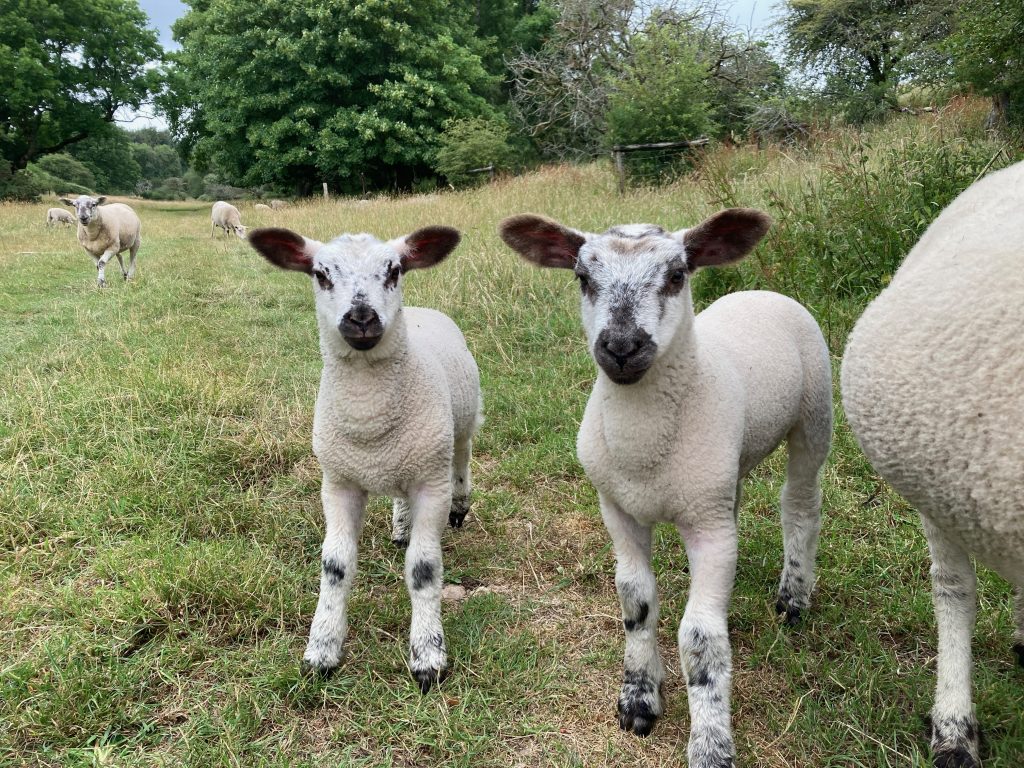
Having managed to miss an account of this year’s lambing in last month’s issue, here are a couple of pictures by way of a catch up. Reggie our young ram has done well, by ensuring that all except one of our ewes got in lamb, the one who didn’t was a bit old and nature was probably telling us she shouldn’t anyway. Our 11 ewes produced 19 lambs, which is pretty good, including one set of triplets, however true lambing percentage is worked out by number of lambs sold divided by number of ewes put to the ram. We haven’t sold any lambs yet, and we had put 13 ewes to the ram, one died and one was empty. At first glance our lambing percentage of 1.73 looks pretty good, but the true number of 1.46 is rather ordinary. How many sheep farmers accidentally forget to add back ewes lost or empty when calculating their flock performance? It’s tempting, like pub talk of yields at harvest time.
Above are Conker’s lambs, bearing no small resemblance to their mother, as you will see if you follow this link to Conker’s own page.
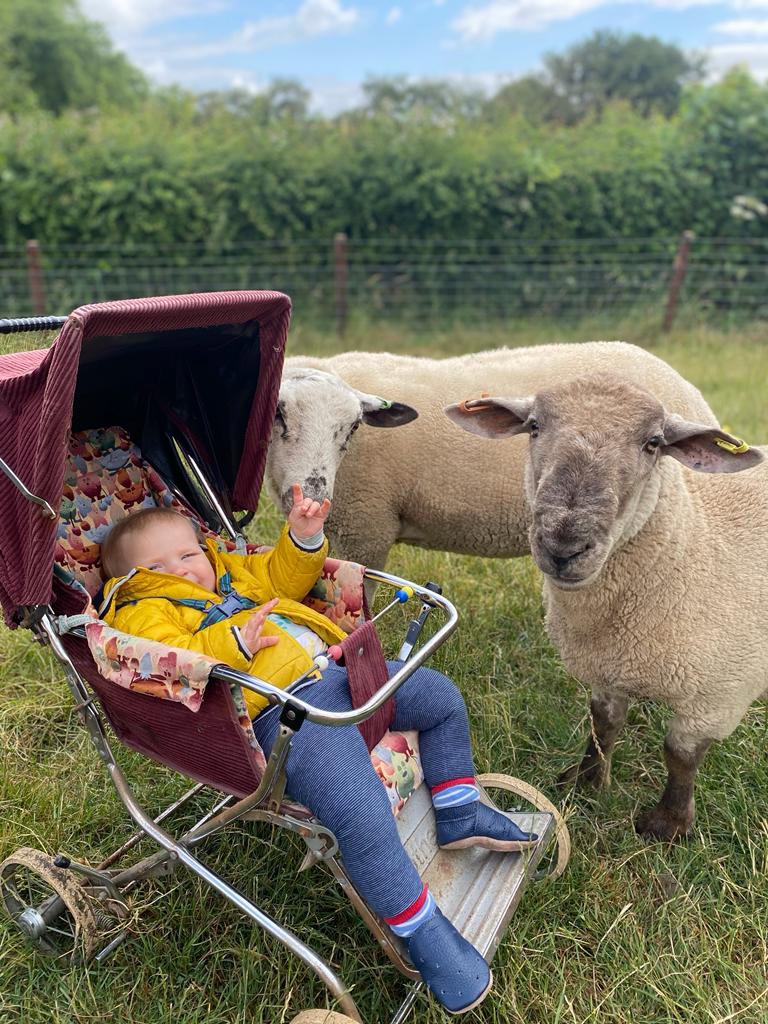
For those professional sheep farmers reading this rather fluffy nonsense about sheep with names, and a whole page devoted to one animal, it is worth reminding ourselves that sheep only remain on this farm for the purpose of entertainment and education. Commercial sheep farming is a mug’s game that we gave up last year after a dose of scab forced us to dip all of our sheep in a very unpleasant chemical (or rather a contractor did the dipping), which is the only reliable way to get rid of this pernicious affliction. It was the excuse needed to disperse the flock, after finding they weren’t really helping with management of oilseed rape by grazing it in the winter, neither were they encouraging wild flowers in our grass swards. The regenerative approach lends itself more to cattle grazing than sheep, cattle browse, whereas sheep nibble, right down to the ground given a chance, often preferentially eating out herbs from a mixed sward If you let them.
When dipping, you have to submerge the animal in the dip fluid completely, if not you will not kill the scab mites which live in the ears of the sheep, and control will not be complete. The rubbing, itching and wool shedding will return, and the job will have to be done again. Back in the 60’s, 70’s and early 80’s it was compulsory to dip all sheep for scab annually, and a policeman would usually attend at dipping time to ensure it was done properly. Dipping is needed for welfare reasons, the mites drive the sheep nuts when they dig in, and it is worst in cold weather. Compulsory dipping was aimed at eradicating the problem nationally. The dipping itself is of course also a welfare issue. Once the disease was nearly gone from the country, the rules were relaxed, it became no longer compulsory, but unfortunately a few pockets of scab remained, and now we are back to a situation where it is endemic. The risk of contracting it in one’s flock is huge when you buy in replacements, particularly from far off sale yards and using an agent to buy for you, as we did. Our replacement policy for many years had been to buy in retired hill ewes, usually from Wales, and expect to get another 2 or 3 crops of lambs from them. We got away with it for a long time, but got caught out in the winter of 2021. That was enough to say no more sheep, it would not have been possible for us to move to a closed flock the way we were farming the sheep then. Our tiny 11 ewe flock is scab free, and apart from the purchase of Reggie the ram last year, we will remain closed, to minimise risk of re-infection.
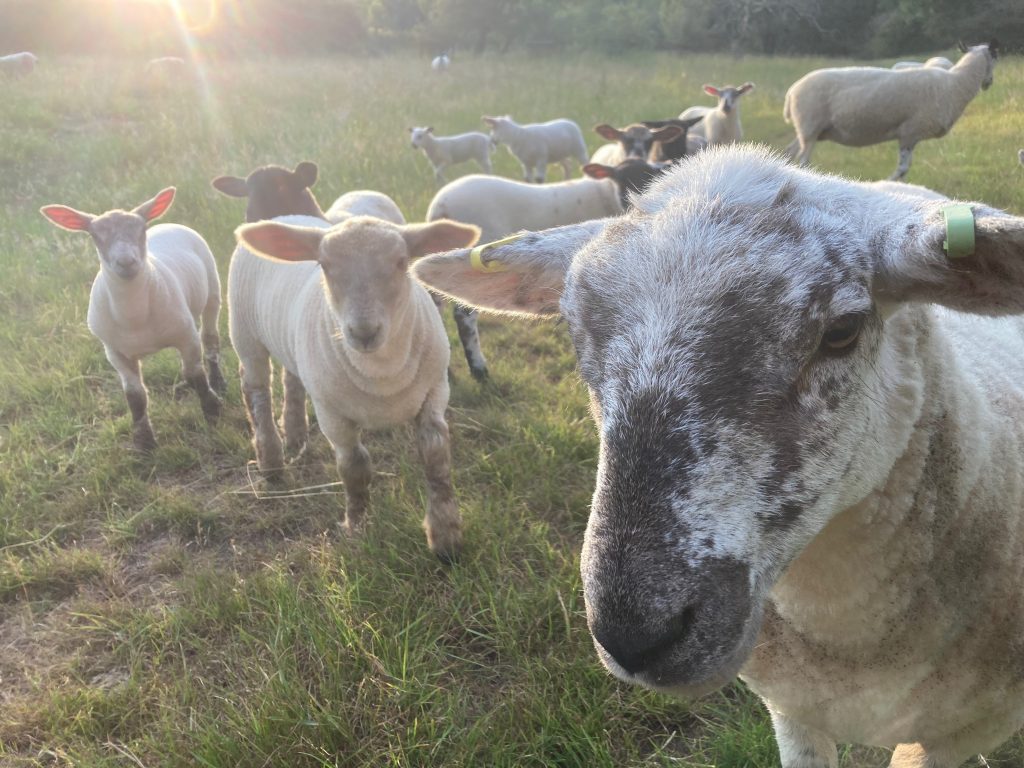
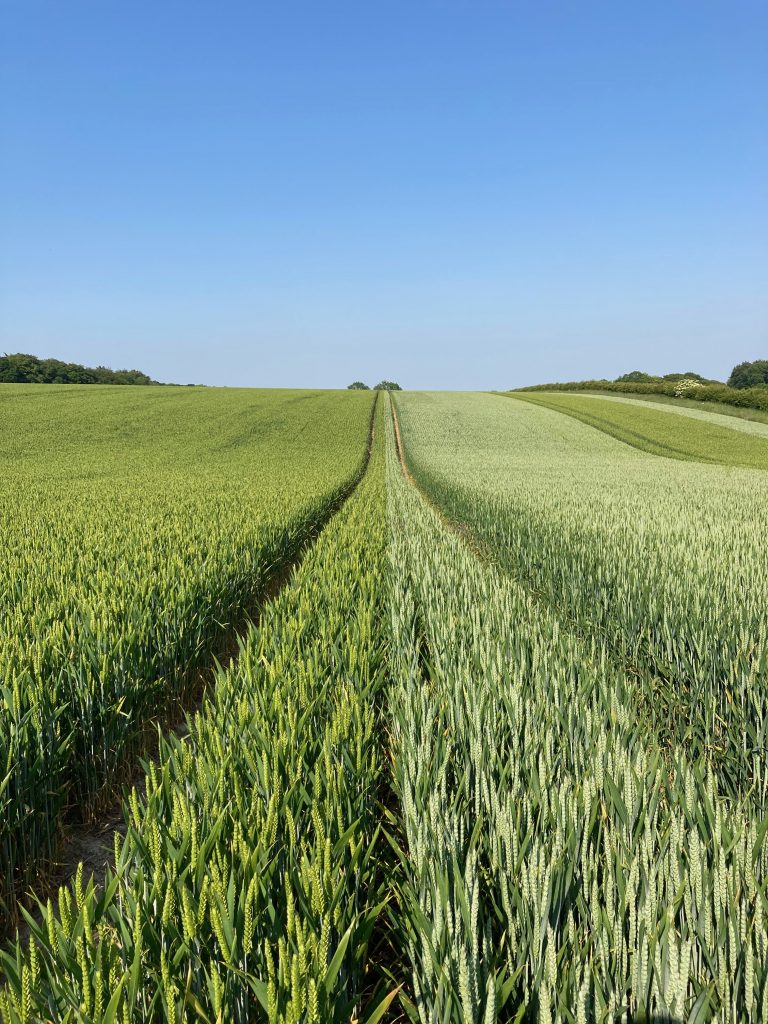
This is one of our wheat fields, showing the colour contrast between varieties. The smaller area of the pale one on the right, variety Champion, was the last of the seed we had sown in a different field. It’s the first year for us for Champion, it has pretty good book values for disease resistance, standing power and yield, we will see what the combine thinks in a few weeks. The darker one is Theodore, its second year for us, it had league-topping ratings for yellow and brown rust, and septoria, at the beginning of this season, however where we have been really stingey with the fungicide we have seen a brown rust explosion, which needed fire engine treatment with fungicide. Apparently we are not alone. Similarly, variety Extase, which we and every other farmer in the country is growing, has very good book values for disease, but has broken down to yellow rust in the absence of fungicide. Proper farmers will be yelling “why no fungicide?”, but having shifted our emphasis away from intensive fertiliser and chemical inputs, we are now trying to stretch the genetic ability of the best available varieties to resist disease. Having reduced fertiliser rates, which in turn reduces vulnerability to disease, a good case must be made before a fungicide is applied. Older (dirtier) varieties received a prophylactic application at T1 and T2 timings, but the supposedly cleaner ones did not, this is where we have stress tested the policy.
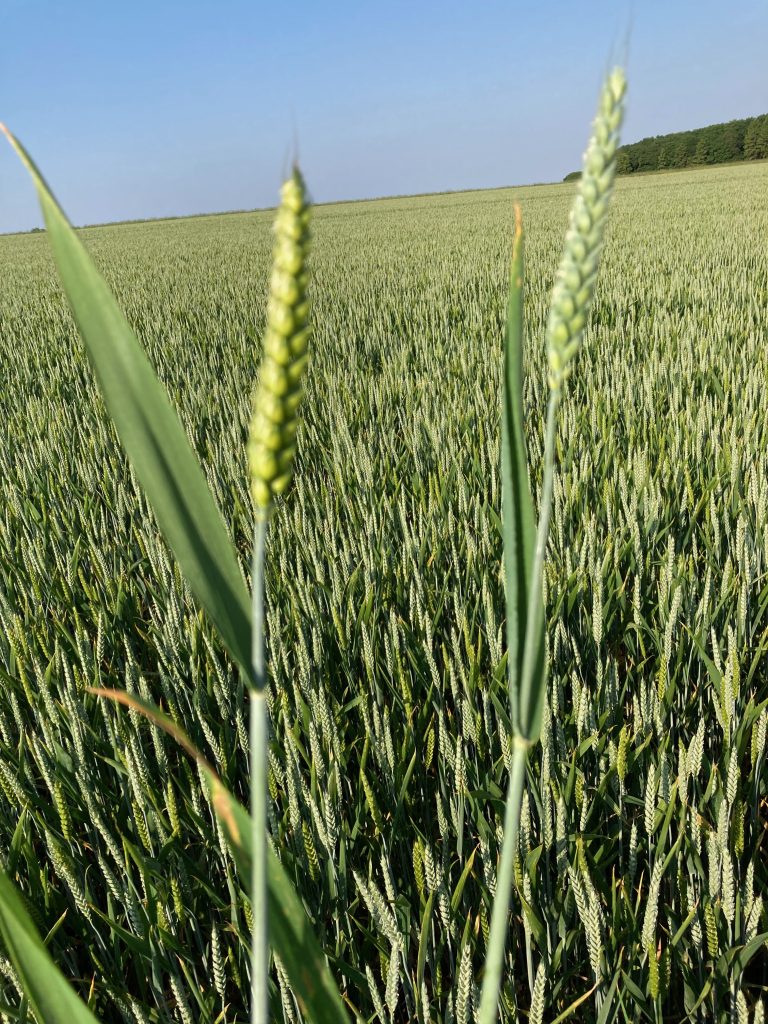
So having seen Theodore and Extase grown on their own with no fungicide both showing their true weaknesses, it has been fascinating to watch how a blend of the two has fared. Where the yellow rust appeared in Extase in mid May, and brown rust in Theodore a couple of weeks later, the same varieties sown in a blend have remained clean until a small amount of rust appeared on the Theodore last week, and our agronomist says it is now too late in the season to worry about treatment. The big question is what is going on? High on my list of reasons is that the plants of the same variety being separated in space by plants of the other variety means that cross infection from plant to plant is reduced. We will definitely be trying more blends next year, and trying 3 and 4 way mixes too.
We are reducing fertiliser levels as part of our desire to create healthier soils, building organic matter and biological activity in the soil improves water and nutrient holding capacity, leading to similar if not better crop performance, at lower input cost, than in quality depleted soils degraded by decades of intense cultivation and fertiliser use.
Nitrogen fertilisers and cultivations oxidise carbon and organic matter in the soil, sending carbon dioxide (CO2) and even more damaging nitrous oxide (N2O) into the atmosphere, as well as releasing water soluble nitrates downwards towards the water table. The climatic and environmental consequences are huge, and it is essential that we learn how to grow food more efficiently, without these dire consequences. Consumers can do their bit by demanding food produced by more sustainable methods, and farmers can do their bit by trying some new tricks.
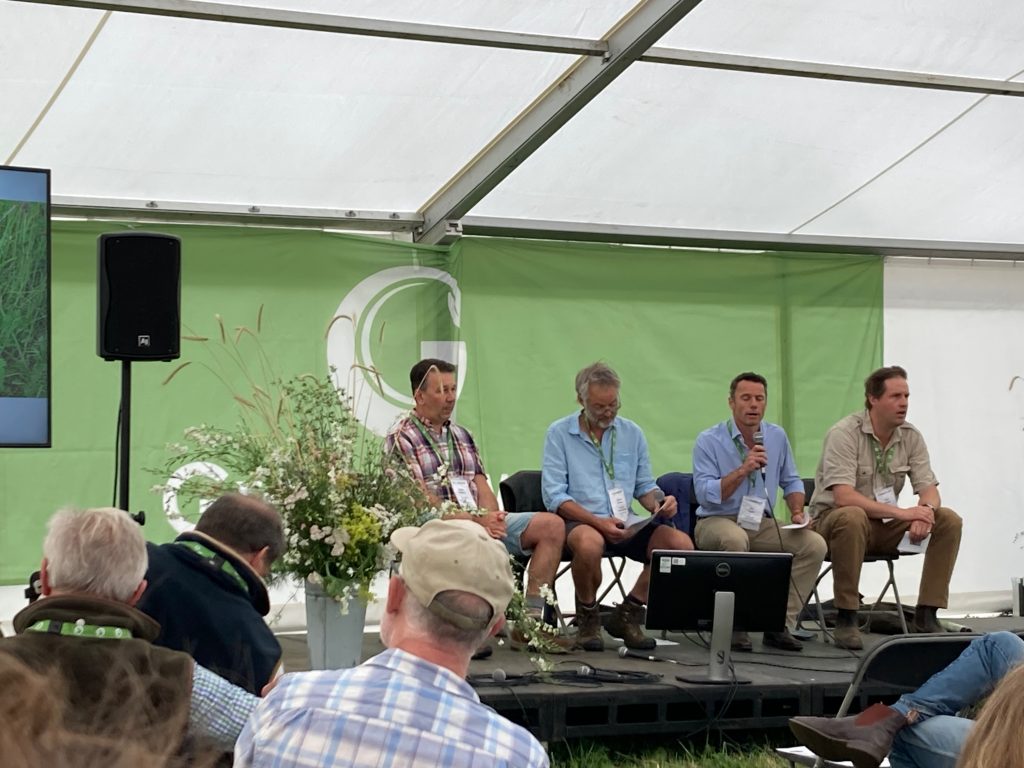
All this and much much more was on the agenda at the Groundswell Agricultural festival in Hertfordshire last week, hosted by the Cherry family on their farm near Hitchin. Groundswell steadily grows in popularity every year, and the breadth of knowledge available in talks, seminars and farmer panels, from specialists and farmers from around the world is mind boggling. Across the two days every couple of hours there would be up to 8 different sessions in 8 different tents. Somewhat frustrating, as you can only be in one place at a time, more than once there were 4 different ones I wanted to listen to. On top of this there are multiple organisations’ displays, demos and snakeoil salesmen to gaze at, admire, or avoid. There were machines on show from no-till drills to robotic weed zappers, a mobile abattoir, compost making, bat, hedgerow and moth safaris, mob grazing demos, with a smattering of music and comedy too. The hard core festival goers camp on site, some glamp, and others hotel off site, the intensity continues until late in the evening, and it is not easy to escape the feeling you must be missing something even when queuing for food or drink to keep you going. It is good fun too, to bump into friends from across the country who are also in search of a new or adjusted way forward for their farming businesses.
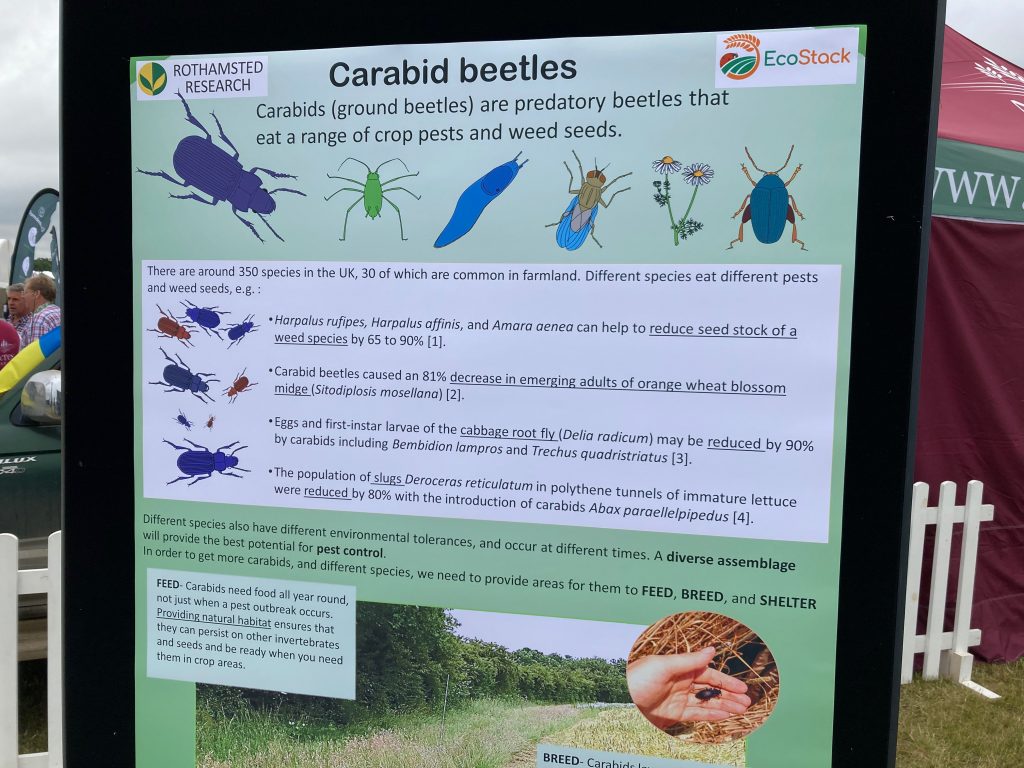
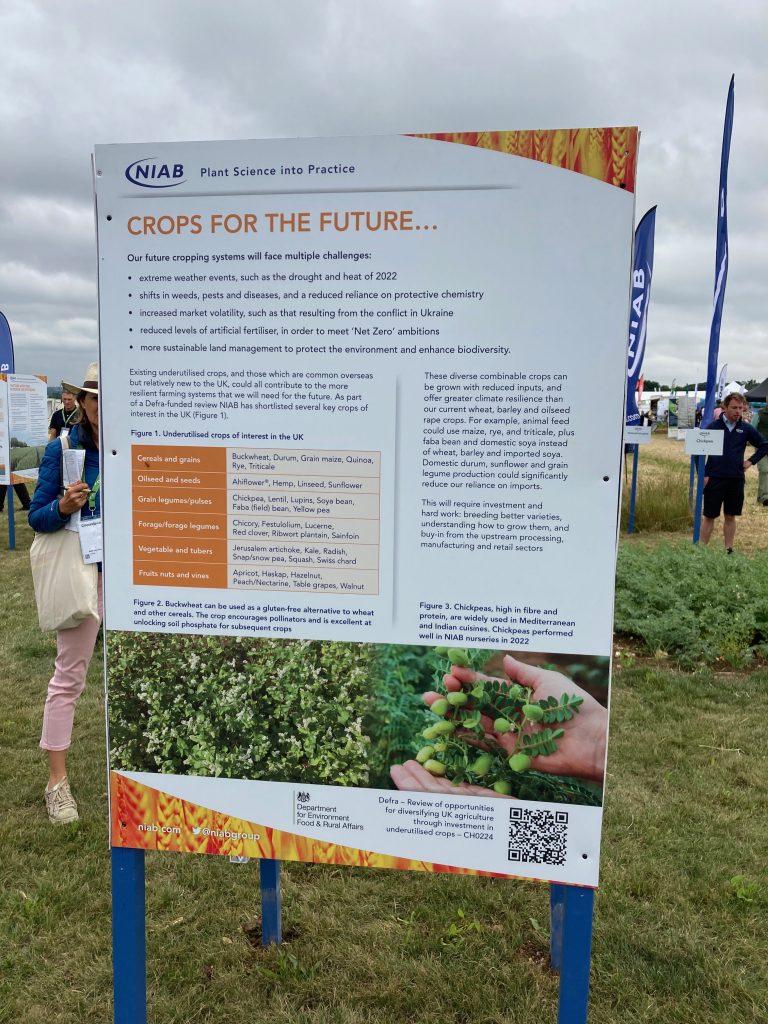
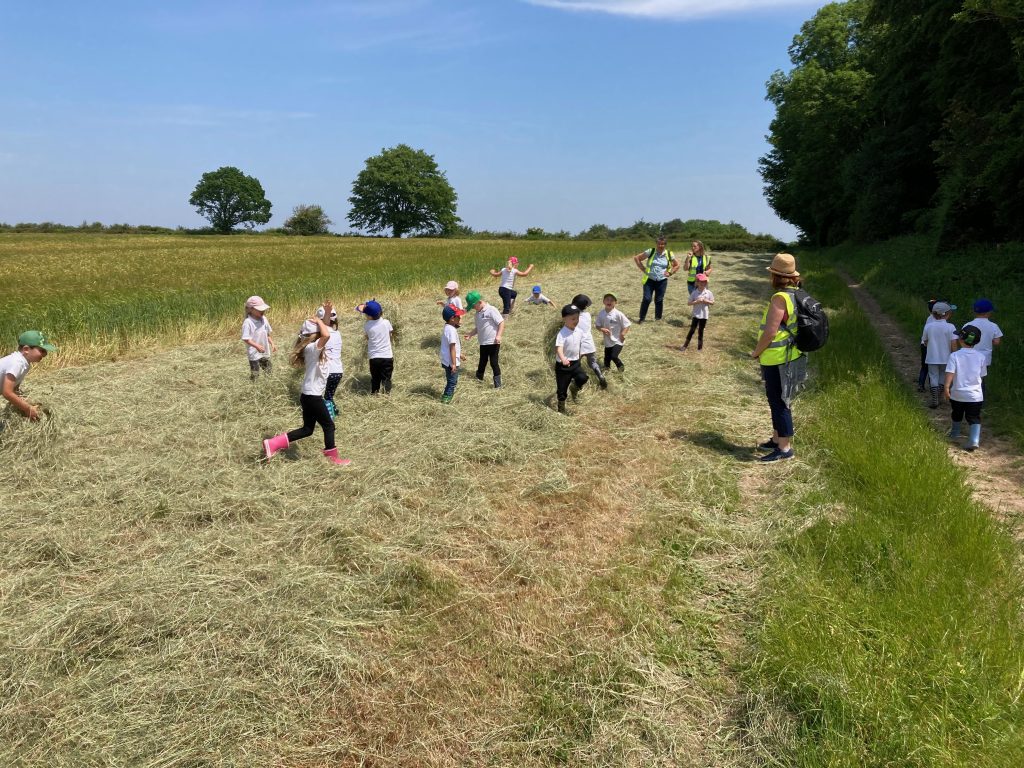
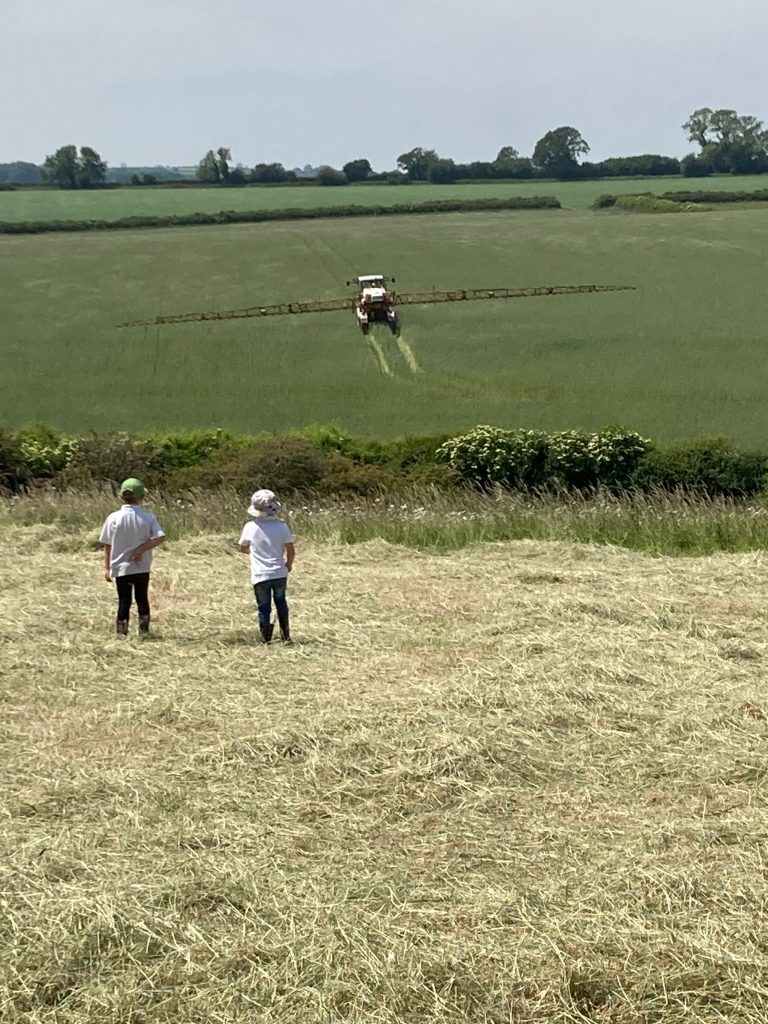
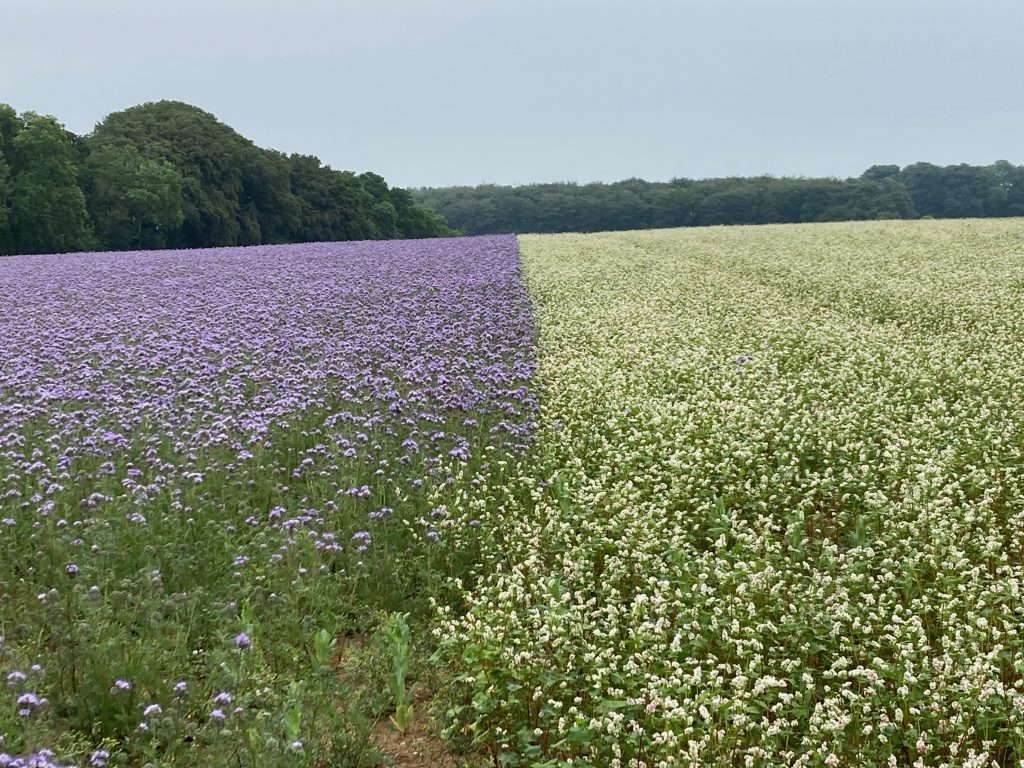
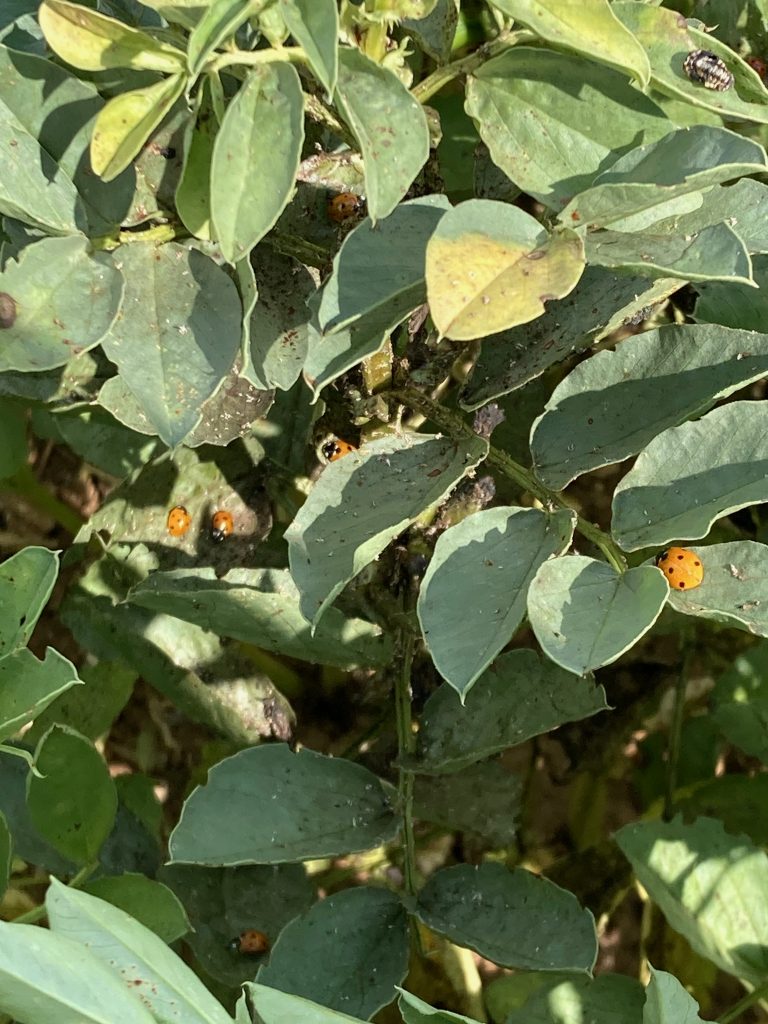
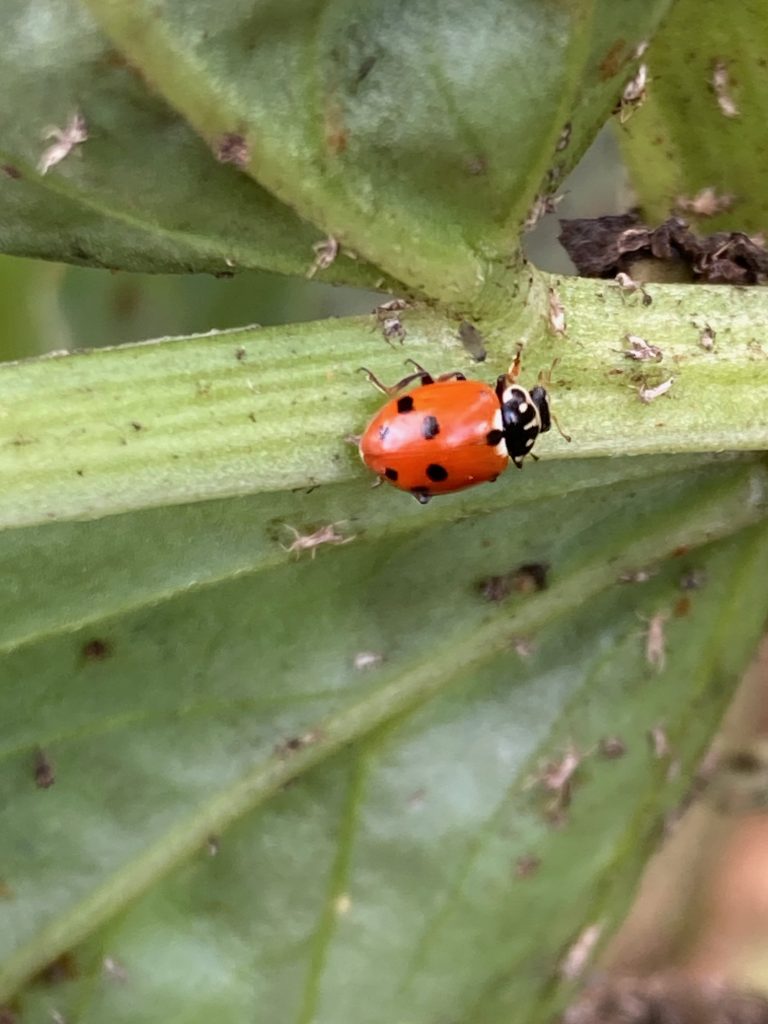
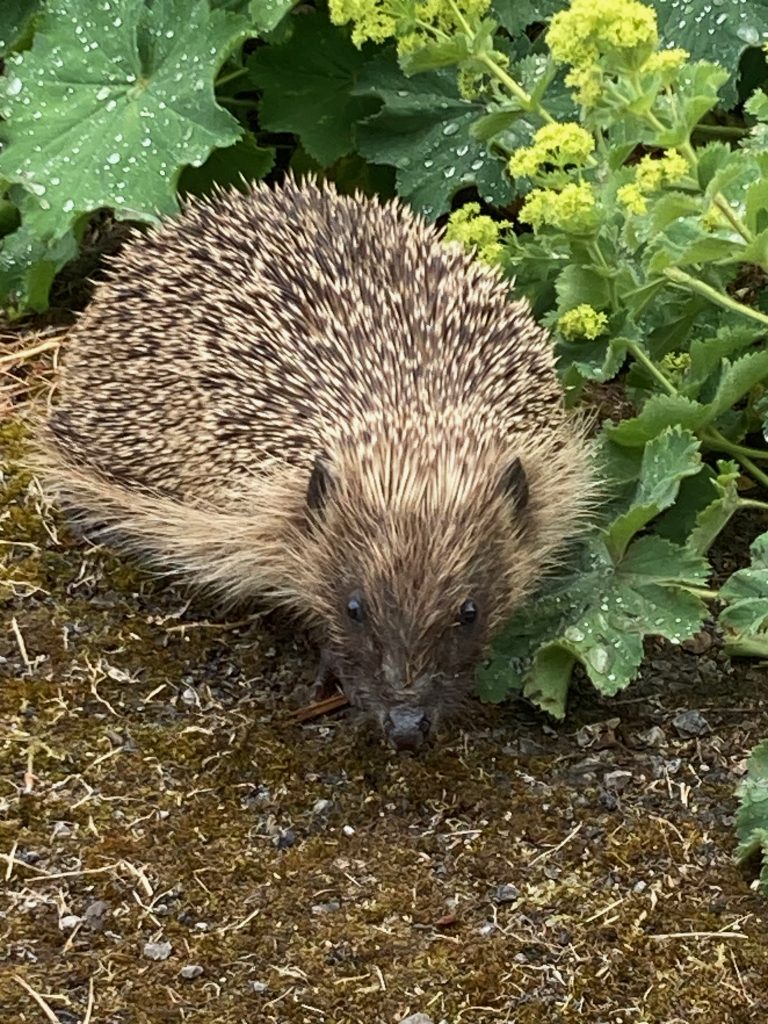
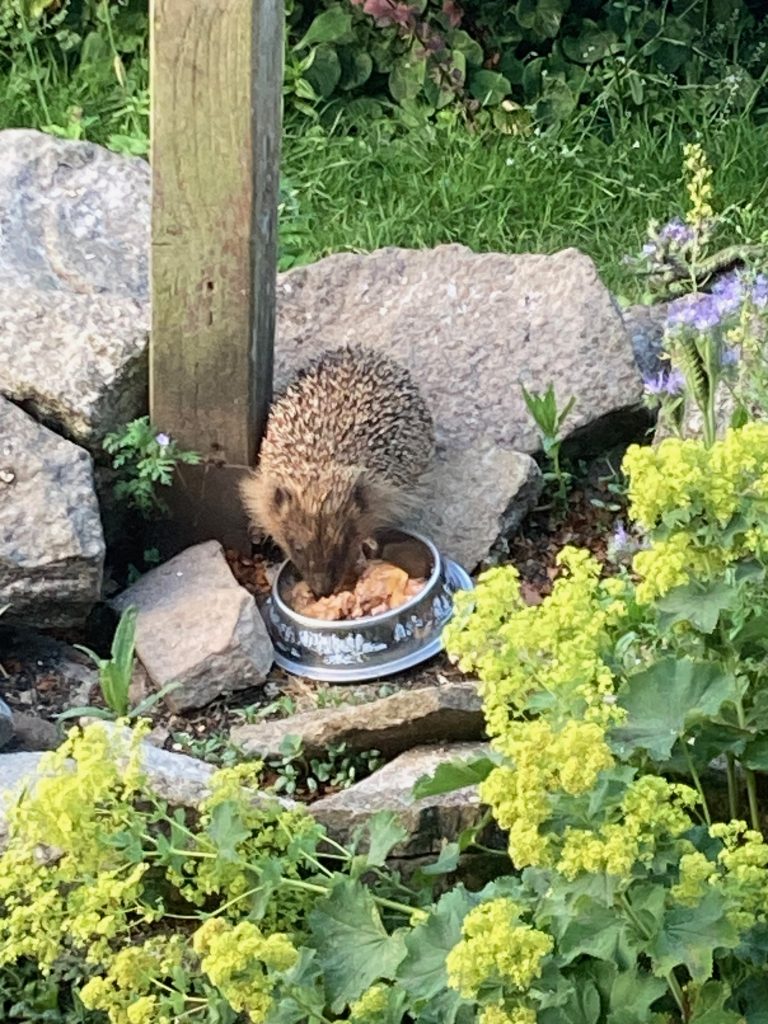
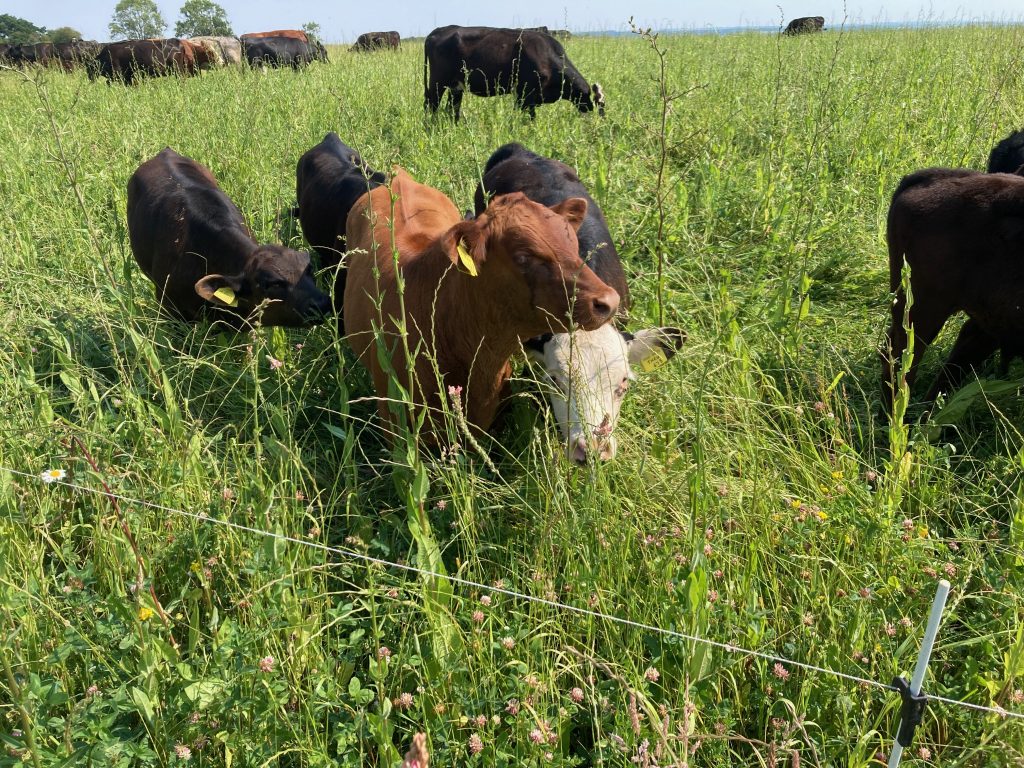
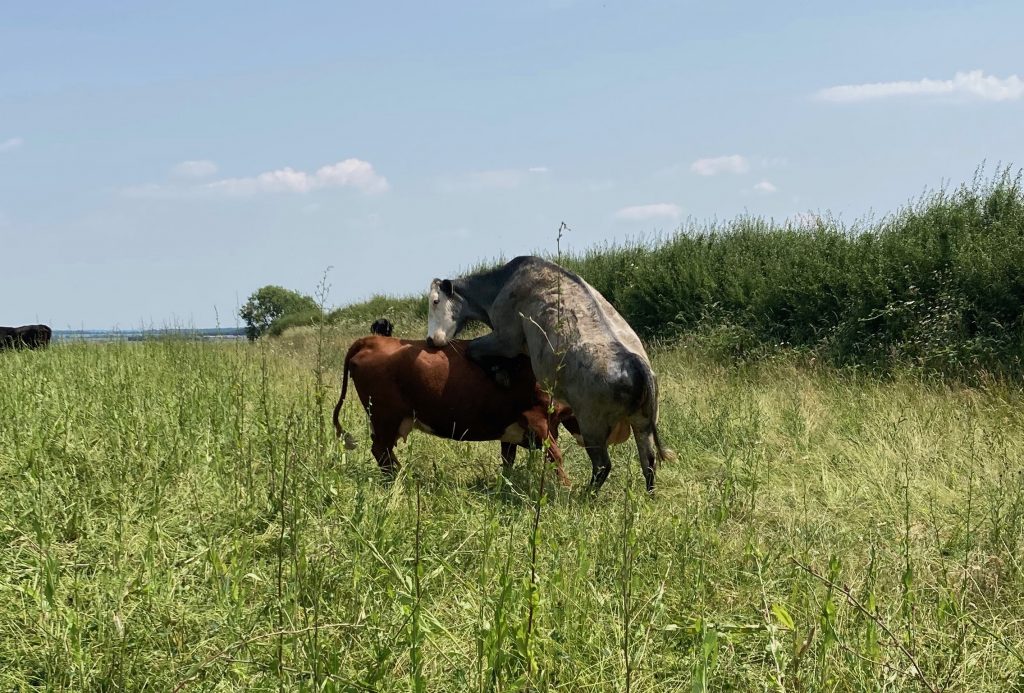
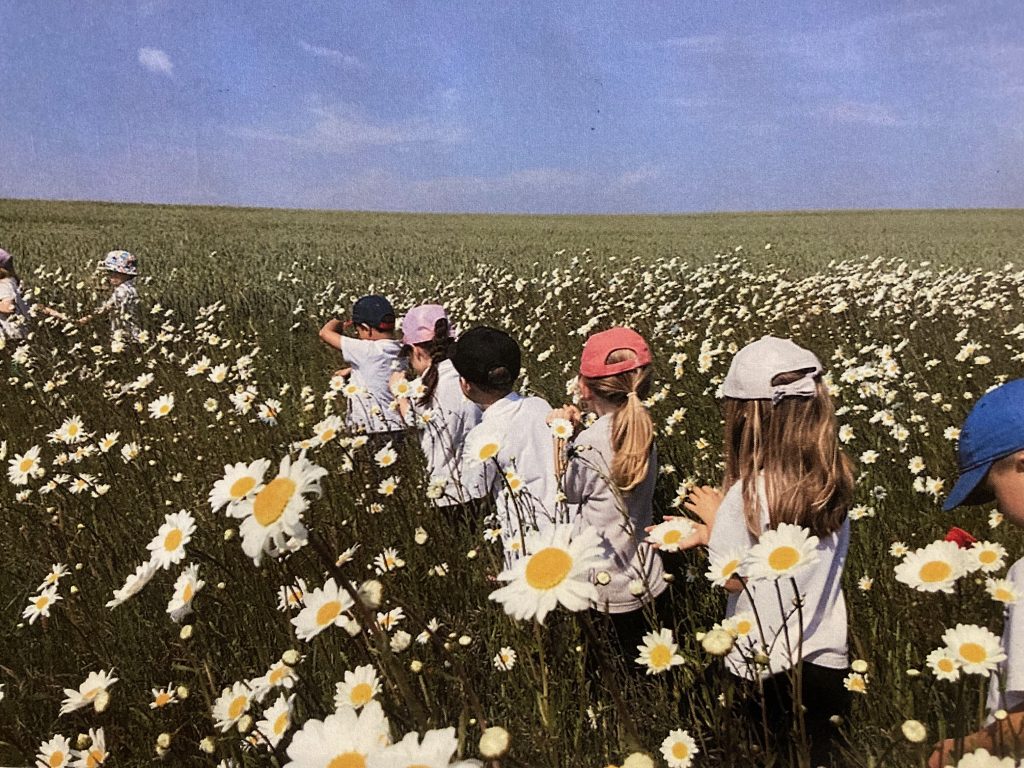
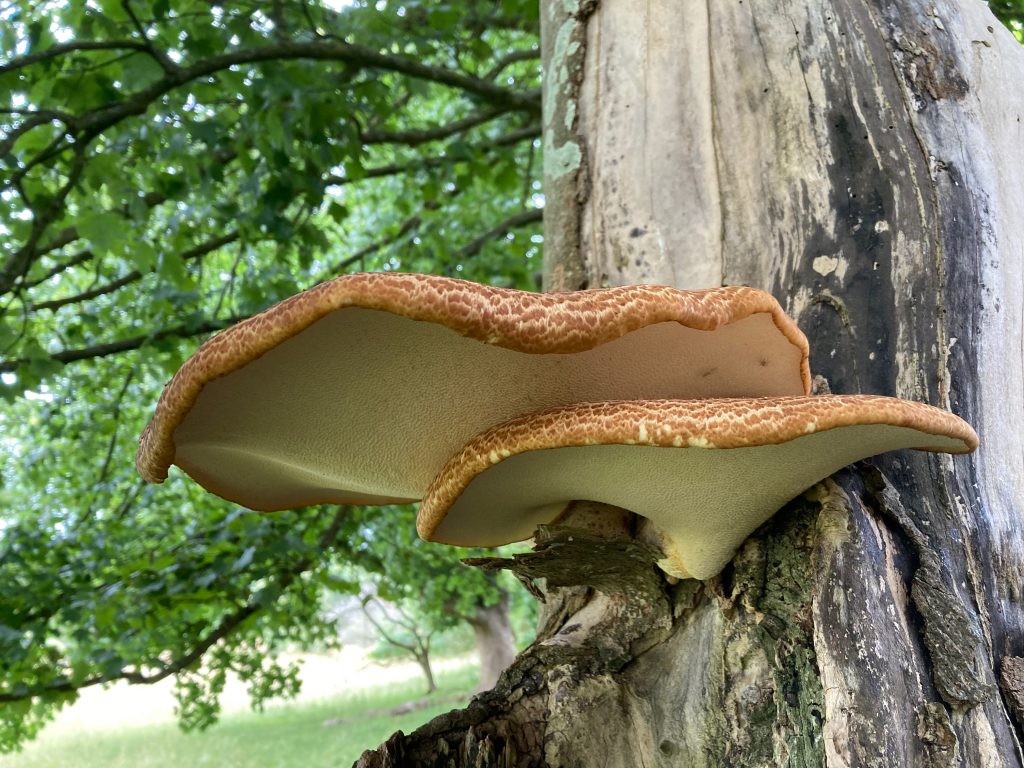
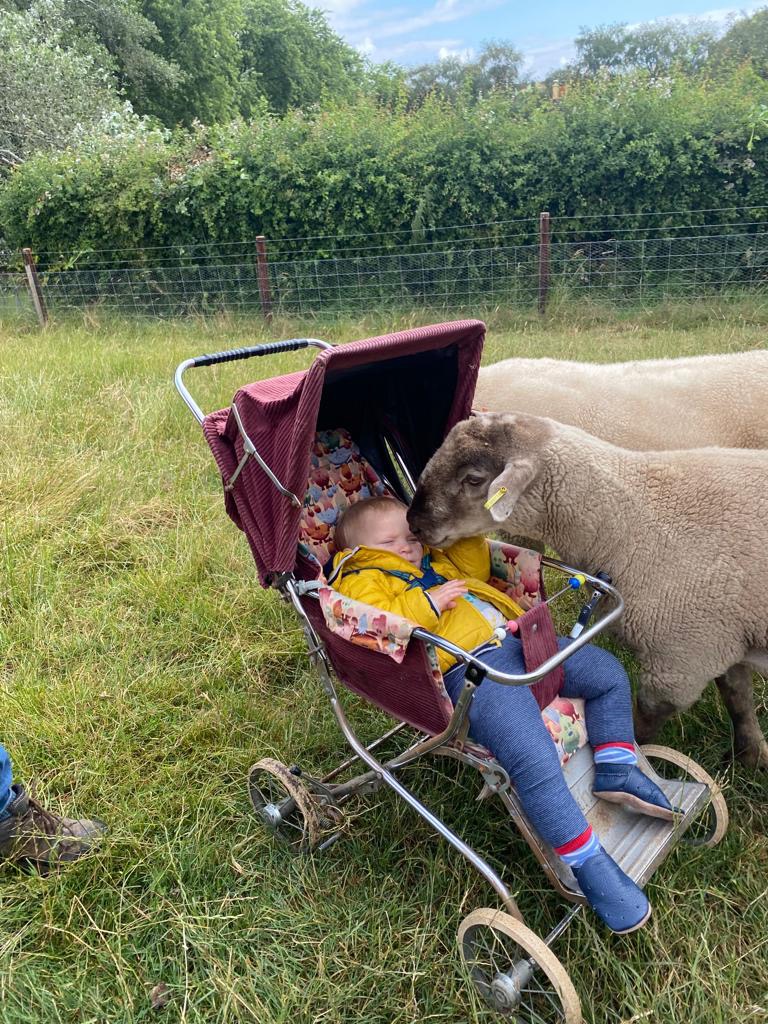

Our Grandaughter who is a townie and not quite six had a splendid visit to Travellers Rest Farm.
No wonder the lambs look so well , fed every morning on toast apparently.
An Australian farmer visitor told me recently that “the only thing stupider than a sheep is the bloke that keeps it”
He has a point.
We had to dip twice a year for scab back in the 80’s and early 90’s using organo-phosphates (OP’s)
Those OP’s work in a very similar way to Sarin as a nerve agent and are skin absorbed, it was virtually impossible to dip the sheep (who are even more reluctant to bathe than boys of a certain age) wearing the full waterproof protective clothing together with a full face mask and so nobody took the protection seriously as it always seemed to take place on a boiling hot day.
Our local Trading Standards chap who had to attend every dipping with his stop-watch to make sure that each sheep had the required time in the bath wore the full gear and he attended countless dipping sessions each year.
Despite his precautions he succumbed in the end to the poisons.
Fortunately the OP’s were nicer than the chemicals they replaced that our fathers had to use, these included dieldrin, DDT and arsenic so we count ourselves jolly lucky.
Any trouble marketing those mixtures of wheat varieties?
Another engaging and delightful View. Thank you George. I can see how frustrating that festival must be with so much going on at the same time. I hope they did videos for later viewing. Happy Summer from Winter Tasmania. 😀
In Gloucestershire in the early ‘80s the County Council Animal Health Inspectors had to supervise the compulsory sheep dipping for scab, testing the dip strength, timing the immersions and often assisting with the dipping. Some farmers would run their dogs through the dip either before or after the flock. Some would attempt to chuck the unsuspecting Inspector in if she dropped her guard as the last sheep dragged itself out of the dip. No protective gear worn by farmers or animal health staff. I’m still here to tell the tale and have two healthy offspring, but I wonder how many became ill, infertile or worse.
Loved seeing Conker’s special page!
The variety mixing makes perfect sense to me and ought to be extendable to a lot more crops particularly horticultural ones that are harvested manually or by robot. One of the concerning aspects of a push to a totally plant based diet would be the removal of farm animals from the mix – though it seems Conker might survive 😊
A fascinating read as ever George. Thank you
I am a keeper of sheep, but have recently halved the flock. Aware of Phil’s comment! Worse than the ever eroded lambing percentage is the difference between number of lambs scanned and number sold/ retained. I can see the day when we halve the flock again….
George, at what point in Groundswell did you fall asleep?
As ever your monthly report easily my favourite farming read
Dear George,
The wonderful mixture of lyrical and explanatory photos and text continues to enhance and explain how your farming life unfolds.
I’m always left wiser and feel that the veil is drawn back a little more each time you produce your view. Education is life long if you so decide,and your sharing enables outsiders so much insight.Bravo as ever! Big hugs 🤗,Rogxxxxx